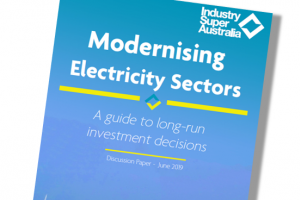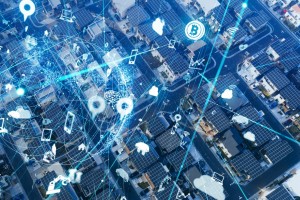EV SmartCharge Queensland program
Understanding how and when electric vehicle (EV) owners charge their cars is important so electricity networks can assess and manage the impact of EVs on the grid. A new project from Energy Queensland has investigated EV charging profiles and offers valuable learnings.
A recent report by Ergon Energy Network and Energex Network (Networks) provides insights from the EV SmartCharge Queensland program and aims at better understanding EV charging profiles and how they impact networks in the future.
Just as Queensland’s electricity distribution networks evolved to support an abundance of air-conditioning and world-leading uptake rates of rooftop solar, they will need to cater for the electrification of transport.
Electric vehicle (EV) adoption in Queensland, and Australia generally, has been slow, but has the potential to follow the rapid adoption in other parts of the world . As at 31 January 2023 there were 18,704 EVs (excluding motorcycles) registered in Queensland; When this transition accelerates, it will come with new challenges and new opportunities.
The EV SmartCharge Queensland program was launched in May 2020. As part of the program, data was collected from 167 passenger EV owners in Queensland. The outcomes of the program will help networks drive decisions to maximise benefits for both customers and networks.
“While EV sales in Australia have been relatively slow compared to the global average, we wanted to get on the front foot and gather data to help us understand the needs of our customers and the potential impact of their charging behaviours on the network,” Executive General Manager Engineering Peter Price.
Key insights
The influence of electricity tariffs on EV charging behaviour
Implementing a retail tariff influences consumer’s charging behaviour. Below is the summary of observations from Figure 1:
- Middle of the night peak:A peak demand was created around 1am as EV owners charge their EVs during the night where discounted rates were offered by retailers
- Middle of the day peak: The middle of the day peak occurred from 9am to 3pm. This was made up by a combination of home and away charging. This peak happened because EV owners with rooftop solar had a desire to self-consume solar generation to charge their EVs rather than exporting to the grid.
- Convenience charging: This occurred between 6pm to midnight as owners immediately charged their EVs when arriving at home to ensure enough battery for their next commute.
Figure 1 Residential vehicles – diversified profile (diversified profile n =119, combines total load averaged across all the vehicles in that cohort including those not charging at the time)
Different charging profiles were dependent on solar, non-solar and or battery energy storage system ownership
EV owners with rooftop solar tend to charge their EVs in the middle of the day (9am to 3pm) using their solar generated power to charge their EVs.
EV owners with solar and battery energy storage systems (BESS), compared withEV owners with solar only, show an at home charging peak about28 per cent higher in the middle of the day. This is because EV owners with solar and BESS tend to use solar generation as much as possible to charge their EVs and BESS during the day, then use the energy stored during the evening period.
EV owners without solar generation had higher evening (convenience) charging, especially during weekdays than their solar counterparts.
Weekday and weekend charging
Charging demand during the middle of the day was about20 per cent higher on weekends compared with weekdays. This is understandable as EVs are not at home as often during a weekday and weekends tend to provide greater opportunity for charging.
There is still a growth in weekday evening charging (from 6pm onwards) which, if not suitably managed, could be problematic to networks as this falls in the network peak demand time of 4-9pm when customers are using electricity for heating/ cooling and cooking.
Length of charge
The charging level reasonably corresponds to expectations of average length of time spent charging. On average, owners tended to charge for shorter periods away from home on Level 1 and 2 charging (slow charging 2-22 kW). With Level 3 and 4 public and destination charging (fast charging 50 – 350 kW), the time for charging was demonstrably shorter.
Key takeaways
- Tariffs significantly impact EV owners’ charging behavior as some EV owners choose to only charge their EVs at times when a cheap retailer price is available. This highlights the potential for loss of diversity and for introduction of new demand peaks.
- EV owners with rooftop solar tend to “solar soak” by charging their EVs during the day
- EV charging is very flexible for customers. Where cheap tariff or solar soak is not necessarily a customer drawcard for EV charging, the likelihood of convenience charging during network peak hours (4-9pm) is heightened.
Based on the average daily kilometres of EVs, many customers’ charging needs would be satisfied by Level 1 slow charging. However, the prospect of faster charging in homes might also prove attractive from a network diversity perspective.
EV charging is a very flexible load for management – either by owners or others. Owners are open to options as to how to manage their EV charging for their benefit; accessing advantageous pricing during the day, using the solar generation they may have in their home, use of their own active control mechanisms or having others manage the charging on their behalf.
The full report and other project materials are provided on the Energex and Ergon Energy Network websites.


